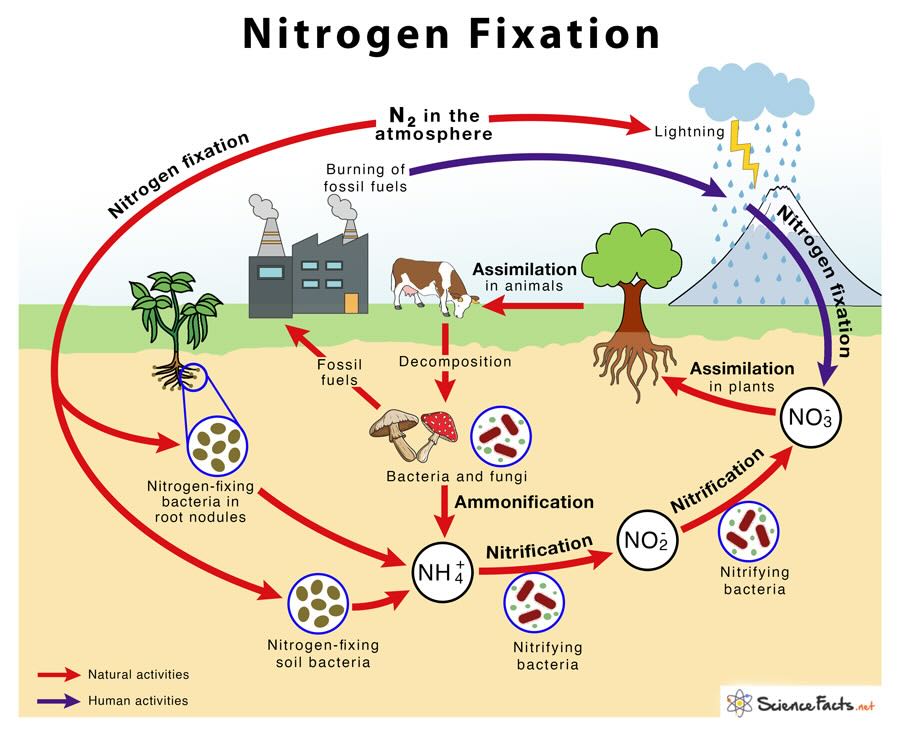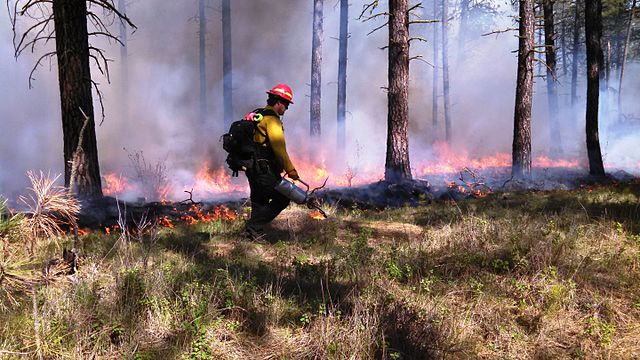Lightning is a powerful weather phenomenon that can quickly and lastingly affect our environment. In this blog post, we will explore how lightning affects everything from the ground beneath our feet to the air we breathe.
The Power of Lightning-Caused Nitrogen Fixation
Most of the nitrogen in our atmosphere is in a stable form that plants cannot absorb. Lightning, however, has the unique ability to convert atmospheric nitrogen into compounds that plants can use. When lightning occurs, it breaks N₂ molecules apart, allowing them to bond with oxygen and form nitrogen oxides (NOx). These oxides dissolve in rainfall, which carries them down to the soil where they enrich ecosystems with a natural form of fertilizer.
This fixing process supports plant growth, especially in areas where other sources of N₂ are scarce. Lightning is a key player in maintaining the balance of nitrogen in the soil, making it essential for agriculture, forestry, and natural ecosystems. By transforming N₂ through its immense heat and energy, lightning ensures that plants can access this essential nutrient, fostering a cycle of growth.

Shaping Landscapes Through Lightning-Induced Erosion
Although erosion is a gradual process, lightning can accelerate its impact in certain environments. When lightning strikes rocky terrain, the intense heat can shatter rocks, weakening structures and contributing to the slow reshaping of landscapes over time.
- Rock fragmentation. Lightning heats rocks rapidly, sometimes up to 50,000°F (about 28,000°C), causing them to crack or fragment. Such transformed rocks are called fulgurites.
- Formation of new minerals. In 2023, a lightning strike hit a tree in New Port Richey, U.S., and the electricity spread into the nearby soil. This caused the formation of a new mineral in the surrounding rocks, known as a phosphite crystal.
 Source: Thomas Ouellette, WUSF public media
Source: Thomas Ouellette, WUSF public media
- Soil redistribution. Rock fragments created by lightning strikes become part of the soil as they weather, contributing to nutrient cycles in these regions.
Lightning’s Influence on the Atmosphere
Beyond its effects on land, lightning plays an influential role in the atmosphere, particularly in ozone creation. Energy generated during a lightning strike breaks down nitrogen and oxygen molecules, producing O₃ in the surrounding air. This lightning-generated ozone is a critical part of the upper atmosphere, where it helps shield Earth from harmful UV rays. Although ozone at ground level acts as a pollutant, its presence in the upper atmosphere is vital for life on Earth.
Lightning also produces reactive compounds that contribute to air cleansing. These compounds help break down pollutants, making lightning a natural air-purifying force.
The Carbon Cycle, Greenhouse Gases, and Wildfire Dynamics
When lightning ignites a forest fire, it releases carbon stored in vegetation back into the atmosphere as CO₂. This interaction between fire and carbon is complex but important:
- Carbon storage and release. Trees store carbon as they grow, but when they burn, the carbon is released as greenhouse gases. In moderation, this cycle is part of natural carbon flux.
- Soil carbon enrichment. Charcoal and other carbon-rich materials left after a fire (biochar) enrich the soil, helping new plants to grow.
 Source: Oregon Department of Forestry, CC BY 2.0, via Wikimedia Commons
Source: Oregon Department of Forestry, CC BY 2.0, via Wikimedia Commons
Broader Impacts of Lightning on Ecosystems
The legacy of lightning extends to both plant and animal life, creating selective pressures that shape species and influence ecosystem dynamics. In areas where lightning fires are common, plant species have adapted with traits like thick bark and fire-resistant seeds. This adaptation ensures that they survive and reproduce even in fire-prone environments, promoting a unique balance in ecosystems, as fire-tolerant species dominate certain regions.
Animals, too, adjust their behavior and survival strategies in response to lightning and fire. Some burrowing animals, for example, use burned areas to find food and shelter with less competition from thick vegetation. Others may rely on post-fire landscapes to access new resources, showing how lightning indirectly shapes animal populations by altering habitats and resource availability.
The Future of Lightning’s Environmental Impact
Climate change is likely to change the frequency and intensity of lightning strikes, which could have widespread effects. A warmer atmosphere holds more moisture, potentially leading to more intense thunderstorms and, as a result, increased lightning activity. This increase could lead to more frequent forest fires, greater nitrogen deposition in soils, and possibly more O₃ production in the upper atmosphere.
Changing lightning patterns may shift fire seasons and alter natural cycles of growth and regeneration. If lightning becomes more common, fire-dependent ecosystems may see shorter intervals between burns, while non-fire-adapted regions could face new ecological stresses. Additionally, increased carbon release from lightning-induced fires could amplify global warming, although biochar left after fires could help mitigate some of these effects.
Harnessing Lightning’s Natural Processes
Scientists are exploring ways to harness the effects of lightning for environmental benefit:
- Biochar for carbon capturing. Inspired by charcoal from natural fires, biochar is now produced intentionally to capture carbon and enrich soil, aiding both agriculture and climate goals.
- Nitrogen supplements. Understanding natural lightning-driven fixation of N₂ could inspire more sustainable agricultural practices.
- Wildfire management. Ecologists are reintroducing controlled burns, which simulate natural lightning fires. This maintains ecosystems that rely on fire for health and regeneration.
 Source: USFWS - Pacific Region - Resilient Landscapes, Public Domain, Wikimedia Commons
Source: USFWS - Pacific Region - Resilient Landscapes, Public Domain, Wikimedia Commons
Final Thoughts: The Lasting Impact of Lightning
A single lightning flash may last just milliseconds, but its effects ripple across time and space. By sparking fires, fracturing rocks, fertilizing soils, and contributing to atmospheric balance, lightning is a vital part of our ecology. Each strike plays a role in sustaining ecosystems, maintaining landscapes, and supporting the cycles of life.
Our understanding of lightning still evolves. Far more than a mere electrical current discharge, lightning is a transformative force. It connects the sky and the earth, shaping the world in powerful and intricate ways.





